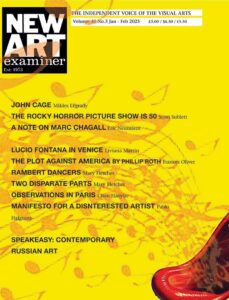Kenneth Grahame’s The Reluctant Dragon: Friendship, Understanding, and Radical Queer Love
Dragons are often fearsome creatures who terrorise humans. That’s certainly an accurate description of Smaug, the dragon at the denouement of J.R.R. Tolkien’s beloved fantasy epic The Hobbit, or there and Back Again. Not all classic fantasy’s dragons are evil, though. A notable exception is the protagonist of The Reluctant Dragon, a mesmerizing and underappreciated novella by The Wind in the Willows author Kenneth Grahame.
The Reluctant Dragon was published in 1898 as part of his collection “Dream Days,” almost a decade earlier than The Wind in the Willows, and at about the same time as Grahame’s contribution of his “Pagan Papers” to the scandalous, Wilde-influenced literary arts periodical The Yellow Book. In the dozen decades since, The Reluctant Dragon has captured the hearts of readers around the world. The unlikely hero of this whimsical story is a dragon. He has a bad reputation in the nearby medieval village, but he is a creature of peace and love who is misunderstood and desperately wants to be tolerated, and more than that: befriended and loved. Like The Wind in the Willows, this late Victorian story offers some visionary alternatives to the toxic masculinity promoted to boys by many of Grahame’s contemporaries.
Introduction to the Dragon

The dragon in Grahame’s tale is not the fearsome creature of traditional folklore but a gentle soul who prefers reading poetry to causing mayhem. This unconventional portrayal immediately sets the tone for a story that challenges stereotypes and invites readers to question their assumptions about appearances and behaviors. From the very first description of the dragon, he combines stereotypical Western dragon physiognomy with pacifism. The first character to encounter him, a shepherd, says:
He was sticking half-way out of the cave, and seemed to be enjoying of the cool of the evening in a poetical sort of way. He was as big as four cart-horses, and all covered with shiny scales—deep-blue scales at the top of him, shading off to a tender sort o’ green below. As he breathed, there was that sort of flicker over his nostrils that you see over our chalk roads on a baking windless day in summer. He had his chin on his paws, and I should say he was meditating about things. Oh, yes, a peaceable sort o’ beast enough, and not ramping or carrying on or doing anything but what was quite right and proper.

Kenneth Grahame’s The Reluctant Dragon’ Dream Days, 1930
In Grahame’s mythopoeic world, the dragon represents the misunderstood outsider. In a society quick to judge based on appearances, the dragon’s peaceful nature and intellectual pursuits contrast sharply with the villagers’ expectations. Like Ratty and Mole in The Wind in the Willows, the dragon can be read as a queer hero. His struggle serves as a commentary on prejudice and the importance of looking beyond surface impressions to discover true character. Central to the narrative is the unlikely friendship between the dragon and the shepherd’s son. This boy, who is never named, is introduced as an outsider. He likes reading books. His parents “book-learning often came in useful at a pinch, in spite of what their neighbours said.” Like the boy, the dragon is a book lover in a book-hating world. He writes poetry, and promises that if anyone wants to read it, he’ll read theirs. A more congenial creature cannot be imagined.
Initially, the Boy is tasked with confronting the dragon, but instead of engaging in battle, they engage in conversation. The Boy is the figure with whom the child reader, perhaps especially the boy reader, is encouraged to identify. Both characters learn that friendship can arise from understanding and mutual respect rather than fear and hostility. In fact, their relationship arguably shifts beyond friendship into love: a love that is radical because the Boy’s society opposes it. The shepherd demonstrates that in his society, it is normal to hate what is rare and misunderstood: “I ain’t used to ’em [dragons], and I don’t hold with ’em, and that’s a fact!” If this seems redolent of xenophobia or homophobia, that’s on purpose. It makes sense to read both the dragon and the boy as queer outsiders entranced and endangered by the atavistic violence of nativist heteropatriarchal masculinity.
The theme of courage is also deeply intertwined with the dragon’s narrative arc. Despite his peaceful nature, the dragon faces the daunting prospect of defending himself against the fearful villagers who perceive him as a threat. His decision to confront the situation peacefully, aided by the Boy’s advocacy, underscores the bravery required to stand up for oneself without resorting to violence. Courage belongs to the peacemakers and lovers, not the fighters, Grahame demonstrates.

Illustration this and next page by Ernest Shepard in the original first edition.
Grahame’s portrayal of the dragon draws upon a rich tapestry of literary influences. From traditional folktales where dragons often symbolize chaos and destruction to more contemporary reinterpretations that emphasize their complexity, Grahame’s dragon stands out as a nuanced character in its own right. It’s also related to other misunderstood creatures. In medieval and early modern Europe, cats were persecuted as demons, and many of their female owners were persecuted as witches. Grahame’s dragon is like a cat: he “purrs.” The misunderstood giant of Oscar Wilde’s children’s story The Selfish Giant might also be an influence; Grahame was profoundly affected by Wilde’s trial and borrows dialogue from it in Toad’s trial in The Wind in the Willows. Throughout The Reluctant Dragon, Grahame’s expert blending of literary and other cultural influences provides readers of all ages with a refreshingly multi-dimensional perspective on the mythical dragon.
The Reluctant Dragon continues to resonate with readers of all ages due to its timeless themes and endearing characters. The dragon remains a symbol of the enduring power of literature to challenge perceptions and inspire empathy. By embracing his uniqueness and refusing to conform to stereotypes, the dragon invites readers to celebrate individuality and appreciate the richness of diversity in all its forms. As readers continue to be enchanted by Grahame’s tale, the dragon’s legacy endures as a testament to the transformative potential of compassion and understanding in a world often marked by fear and misunderstanding.on prejudice and the importance of looking beyond surface impressions to discover true character.
Central to the narrative is the unlikely friendship between the dragon and the shepherd’s son. This boy, who is never named, is introduced as an outsider. He likes reading books. His parents “book-learning often came in useful at a pinch, in spite of what their neighbours said.” Like the boy, the dragon is a book lover in a book-hating world. He writes poetry, and promises that if anyone wants to read it, he’ll read theirs. A more congenial creature cannot be imagined.
Initially, the Boy is tasked with confronting the dragon, but instead of engaging in battle, they engage in conversation. The Boy is the figure with whom the child reader, perhaps especially the boy reader, is encouraged to identify. Both characters learn that friendship can arise from understanding and mutual respect rather than fear and hostility. In fact, their relationship arguably shifts beyond friendship into love: a love that is radical because the Boy’s society opposes it. The shepherd demonstrates that in his society, it is normal to hate what is rare and misunderstood: “I ain’t used to ’em [drag- ons], and I don’t hold with ’em, and that’s a fact!” If this seems redolent of xenophobia or homophobia, that’s on purpose. It makes sense to read both the dragon and the boy as queer outsiders entranced and endangered by the atavistic violence of nativist heteropatriarchal masculinity.
The theme of courage is also deeply intertwined with the dragon’s narrative arc. Despite his peaceful nature, the dragon faces the daunting prospect of defending himself against the fearful villagers who perceive him as a threat. His decision to confront the situation peacefully, aided by the Boy’s advocacy, underscores the bravery required to stand up for oneself without resorting to violence. Courage belongs to the peacemakers and lovers, not the fight- ers, Grahame demonstrates.
Grahame’s portrayal of the dragon draws upon a rich tapestry of literary influences. From traditional folktales where dragons often symbolize chaos and destruction to more contemporary reinterpretations that emphasize their complexity, Grahame’s dragon stands out as a nuanced character in its own right.
It’s also related to other misunderstood creatures. In medieval and early modern Europe, cats were persecuted as demons, and many of their female owners were persecuted as witches. Grahame’s dragon is like a cat: he “purrs.” The misunderstood giant of Oscar Wilde’s children’s story The Selfish Giant might also be an influence; Grahame was profoundly affected by Wilde’s trial and borrows dialogue from it in Toad’s trial in The Wind in the Willows. Throughout The Reluctant Dragon, Grahame’s ex- pert blending of literary and other cultural influenc- es provides readers of all ages with a refreshingly multi-dimensional perspective on the mythical dragon.
The Reluctant Dragon continues to resonate with readers of all ages due to its timeless themes and endearing characters. The dragon remains a symbol of the enduring power of literature to challenge perceptions and inspire empathy. By embracing his uniqueness and refusing to conform to stereotypes, the dragon invites readers to celebrate individuality and appreciate the richness of diversity in all its forms. As readers continue to be enchanted by Grahame’s tale, the dragon’s legacy endures as a testa- ment to the transformative potential of compassion and understanding in a world often marked by fear and misunderstanding.

